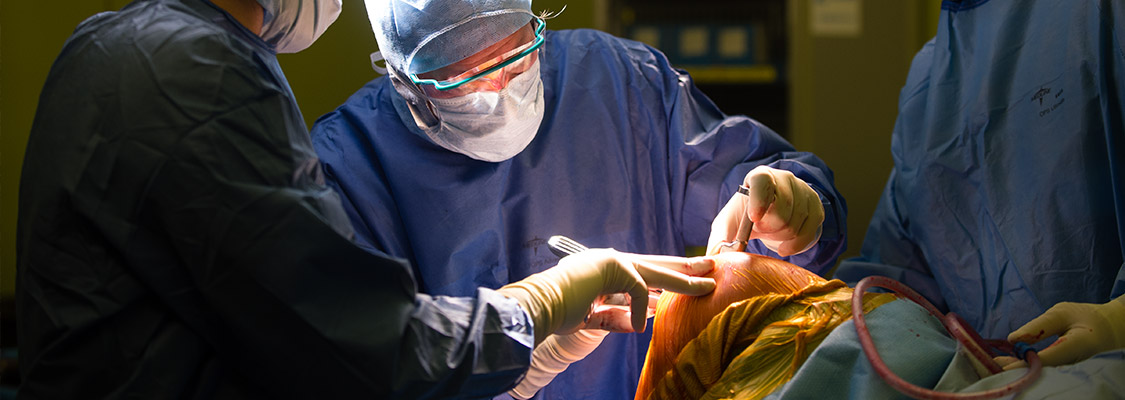Knee arthroplasty

The Knee Surgery Unit at the Cliniques universitaires Saint-Luc in Brussels offers partial knee prosthesis for unicompartmental wear due to osteoarthritis.
450 knee replacements are carried out each year by the team at the Cliniques universitaires Saint-Luc. A remarkable number for a Belgian hospital!
Knee prostheses – one, two or three compartments?
The knee is composed of 3 joint areas: the internal compartment (the inner face of the knee), the external compartment (the outer face of the knee) and the patella (kneecap or front of the knee). When all three have become worn due to osteoarthritis (wear of the joint cartilage), it is best for them to be replaced by a total knee prosthesis. But when only one or two compartments have been affected, it is better to opt for what is known as a “resurfacing” prosthesis: either a unicompartmental prosthesis (to replace one compartment of the knee) or a bicompartmental prosthesis (replacing two).
Advantages of partial knee prostheses
A total knee prosthesis is technically easier for the surgeon. However, when there are only one or two compartments to replace, The Unit recommends resurfacing prostheses. Compared with a total prosthesis, these partial prostheses have a number of advantages:
- The procedure is less invasive as no tendon is cut, the cruciate ligaments remain intact and it is not necessary to dislocate the knee to insert a total prosthesis.
- Recovery is faster with less comorbidity for fragile patients.
- The results at one year are better from the point of view of chronic pain.
Fast and optimal recovery
Thanks to a coordinated multidisciplinary approach, patients who have knee replacement surgery at the Cliniques universitaires Saint-Luc walk without crutches the very next day !
- The anaesthesiologists attached to the Orthopaedic Surgery Unit at the Cliniques universitaires Saint-Luc have developed advanced techniques and use multimodal analgesia which speed up recovery and reduce both post-operative and long-term pain.
- An optimal recovery protocol and a precise clinical pathway (“Optimal Recovery”) have been introduced. These are followed by all patients. For example, nurses and physiotherapists in the care unit know exactly when to get patients up and out of bed, when to get them to take their first steps (D+1), to climb stairs (D+2) etc.
More information (for the time being only in French) : www.saintluc.be
